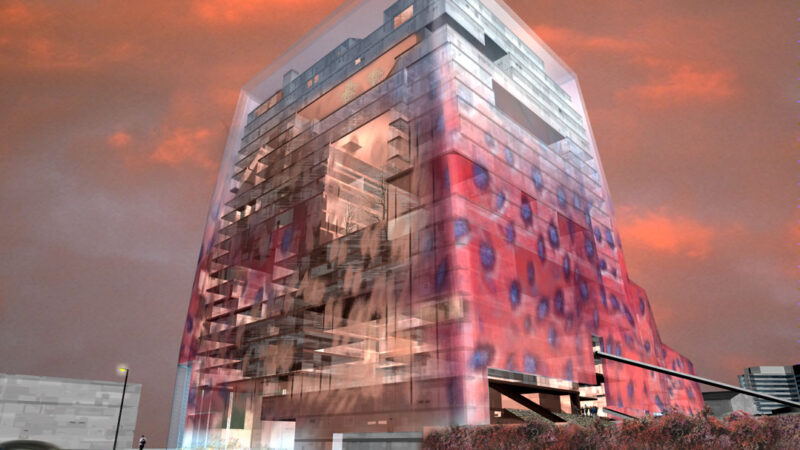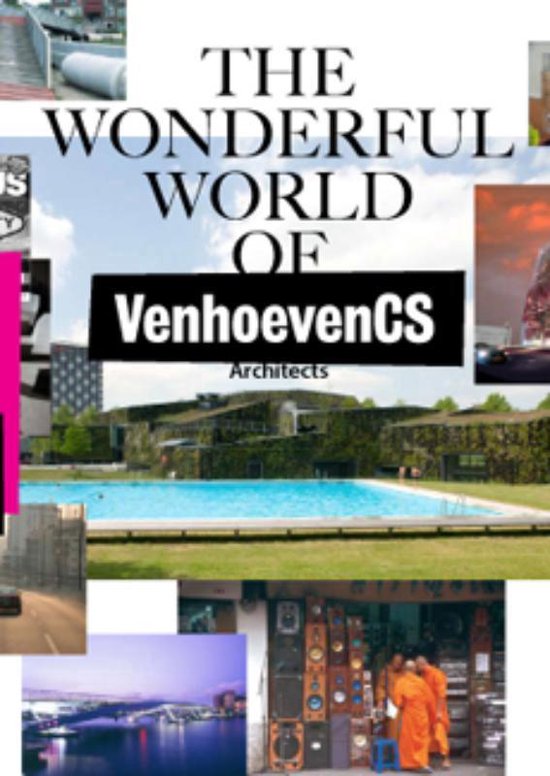
Sustainable Architecture
Ton Venhoeven | 2012
In our vision, sustainable architecture has to do with optimising quality of life, energy efficiency, and use of materials in the design. The cultural context and the direct surroundings of the building play an important part in this, because a significant part of the quality of life and the life expectancy is determined by the relationship between a building and its environment. It is also possible to achieve gains in terms of energy and materials in relation to the larger network environment. In order to take optimum advantage of these possibilities, VenhoevenCS is working with various advisors to create feasible designs which anticipate requirements that will be standard in the future. In this we utilise the insights of all widely supported sustainability tools.
Our book The Wonderful World of VenhoevenCS (Episode Publishers, 2009) covers the technical and cultural aspects of sustainable architecture in detail.
Sustainable architecture
In recent years, great progress has been made in the development of knowledge in the field of sustainable and energy-efficient buildings and communities. In some projects, truly spectacular results have been achieved using thermal insulation and energy conservation. In others, ingenious techniques have been developed to make buildings fully industrial, flexible and capable of being dismantled so that its materials can be 100% recyclable. Some buildings have been made so flexible that they have had an extremely long life despite many functional changes. Other projects are focused on making buildings that relate better to the cities in which they are located – for example, by opening to the street, to not only improve the public space but make it more attractive for passing pedestrians, as well as to discourage people from driving, to get people more active and to create a place where children can play in the street again. There are also a number of cultural facilities such as museums and theatres built to improve the quality of life in cities, and roof gardens to mitigate urban heat islands. The list of measures that in one sense or another can be labelled “sustainable” is virtually endless.
Many ideas have found their way to wider applications, while just as many others have not. Standards are becoming increasingly strict, and more and more buildings, including our own, are becoming better insulated and equipped with more efficient systems. Great improvements are made in this area every year. But there is still an extensive category of options that can be implemented quickly. They may seem attractive on paper, but might be missed, for example because they are so technically unassuming. Some may be very attractive for consumers but less appealing for manufacturers. Others are still too expensive for wide-scale application, or need another technical advancement before they are practicable. The cost-revenue ratio of any measure is extremely decisive for its successful application, and this is precisely an area that a good design can have a significant impact on. From the perspective of planners, designers and builders, this category of ideas with potentially quick application is also more interesting than the category of exotic ideas that still have a long way to go.
"the cost-revenue ratio of any measure is extremely decisive for its successful application"
Better buildings, better cities
The savings on energy for the use of buildings alone may, depending on the location, run into double-digit percentages as compared to conventional use. And this also applies to total energy consumption in cities all over the world. If all opportunities for improvement in the construction, energy, water, food production and transport sectors could be implemented, we could save over half of the world’s energy needs, and the remainder could be easily covered by renewable energy generation. With the many new buildings and cities to be added in the coming decades, and timely improvement of the existing ones, we will be able to achieve enormous improvement in a short amount of time. The biggest factor in achieving this is to make these measures smart, small-scale, low-tech and affordable. And that means on or in the buildings themselves. Theoretically, we already have enough practical knowledge for this available, so we can now accelerate the entire sustainability operation.
"we could save over half of the world's energy needs"
Smart Grid
Remote locations such as individual buildings can generate a great deal of energy cost-effectively, but at the building level this can only work as an energy supply when it is paired with the option to supply electricity back into the power grid, so that central energy generation functions as a robust buffer. The potential profit is huge; exchanges of surpluses and shortfalls between different buildings or building clusters reduces dependence on power stations and moving towards affordable, sustainable energy. One appealing method of structuring this exchange is the “smart grid”. A smart grid distributes power efficiently because the electrical devices connected to it can communicate, so that energy is exchanged at the optimal moment. With the combination of smart grid and central and remote power generation, fluctuations in supply and demand at varying scales can be compensated for, resulting in sustainable, affordable energy provision in a short amount of time.
"a smart grid distributes power efficiently"
Interaction with the environment
Generally, a significant amount of design attention goes to profiting from the savings potential the context offers. How can we build a building so as to optimally profit from local conditions such as climate, light incidence, wind, or the presence of a river or groundwater? Can we draw heat or cooling from the environment instead of generating it ourselves? Are there residual flows in the environment that we can use? Can we contribute to providing the energy supply for the community? And how can we contribute to preventing excessive car traffic at the wrong moments? From a socio-cultural perspective, how do we make a positive impact on the social cohesion in the area, the urban environment and the social safety locally? And at the user level, questions must be addressed such as: why am I always sitting inside with the air conditioning on when being outside in the breeze or in the sun would be much more pleasant? Can we design a building to offer transitional areas between indoors and outdoors where people can find their own spaces? That is, how can the designer, in consultation with the consultants, create pleasant microclimates both indoors and outdoors, without mechanical interventions?
Harvesting resources and energy
For small clusters of buildings, or when an existing complex must be expanded with new functions and buildings, there are many opportunities to make use of the environment. An inventory of all flows in the areas of energy, waste, water, transport and food will identify potential points for harvesting energy. As accustomed as we are to building our homes and businesses on separate spots, this approach is not the most beneficial to the metabolism of the city. The residual demand for heat or cooling of a building cluster may be met by buildings with a different supply and demand pattern. Or the surplus of a waste product like CO2 can potentially be used as a raw material elsewhere, for example as a fertiliser or food production in a greenhouse. This approach generates hybrid forms of architecture and urban clusters with the potential to deal much more efficiently with water, food and energy than conventional paradigms. Every building contributes to the optimal functioning of the whole, whether as mini-power station, “food factory” or consumer of another’s waste flows.
"there are many opportunities to make use of the environment"
For these urban clusters to function optimally, we need a different kind of network. Consider the vast variety of networks that exist, from social networks to attractive walking routes, but also hot and cold water networks, networks for food production and distribution, waste processing, and of course the familiar networks for water, sewage, energy and information. Without good social networks, forming good sustainable clusters is very difficult; likewise, without good walking routes and social interaction, these social networks are difficult to maintain. Good knowledge networks are also necessary, of course, and that means good education and economically robust networks.
"an integrated approach reveals that a building is not a static, isolated object, but interacts with its environment as if it is a living organism"
Eco-functionalism
An integrated approach like this one reveals that a building is not a static, isolated object, but interacts with its environment as if it is a living organism. Designers draw inspiration from the natural world and use this to improve technology in all areas. This biomimicry offers the foundation for a new type of functionalism. Eco-functionalism, the new style that is emerging right now all over the world, connects a diversity of functions and use, decentralised intelligence energy generation, exchange of waste flows and maximisation of use options with optimising relationships with the environment. This approach makes it possible to combine affordable, low-tech measures with the advantages of profitable advanced technology. The search for smart opportunities to coordinate production and use of multiple buildings, building sections or building clusters, not only functionally and energetically, but socially, economically and ecologically, is the foundation for this new eco-functionalism.
"biomimicry offers the foundation for a new type of functionalism: eco-functionalism"
Ton Venhoeven, 2012
All Research

